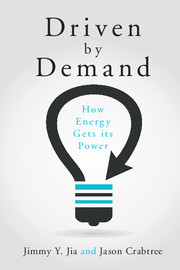Book contents
- Frontmatter
- Dedication
- contents
- List of figures
- List of tables
- Acknowledgments
- Part I Introduction
- Part II Three frameworks
- Part III Critical decisions
- Part IV Energy futurism
- 10 Towards better management of energy infrastructures
- 11 Risk management in energy
- 12 Resilience as a core value
- 13 Exploring energy security
- 14 Energy-as-a-service
- Part V Societal advancement
- References
- Index
14 - Energy-as-a-service
from Part IV - Energy futurism
Published online by Cambridge University Press: 05 June 2015
- Frontmatter
- Dedication
- contents
- List of figures
- List of tables
- Acknowledgments
- Part I Introduction
- Part II Three frameworks
- Part III Critical decisions
- Part IV Energy futurism
- 10 Towards better management of energy infrastructures
- 11 Risk management in energy
- 12 Resilience as a core value
- 13 Exploring energy security
- 14 Energy-as-a-service
- Part V Societal advancement
- References
- Index
Summary
Companies […] are at a crossroads—they need to reengineer business models that worked well for more than 50 years if they want both to survive and retain their position in the market.
White et al. (2013)In 2013, nearly 100,000 Texans elected to join TXU Energy Right Time Pricing, agreeing to pay more during the week for “anytime” electricity usage in exchange for free power between 10 p.m. and 6 a.m., via TXU Energy Free Nights, or 12 a.m. Saturday to 11:59 p.m. Sunday, via TXU Energy Free Weekends, all year (Little, 2014). With 1.5 million customers and more than 40% of the market share for retail electricity sales in Texas, TXU's offering was significant, both in terms of size and as the first “free” electricity incentive plan in Texas. These plans steeply incentivize consumers to concentrate their energy during the non-peak hours in the program to reduce strain on the Texas grid, but there have been concerns over how the plans were marketed to consumers because of an 18-month contract agreement, steep cancellation fees, and general confusion about electricity purchases (Lieber, 2013).
The convergence of energy, information, and financial flows is creating new opportunities for economic growth and improvements to how we relate to the energy we consume. The programs in Texas are just the beginning of diverse energy services made possible by modern technologies. Beneath these new kinds of services offered to businesses and individual consumers, decision-making or support tools rely on software platforms “for myriad tasks that previously were performed in traditional, non-tech ways” (Evans et al., 2008). New business models seeking differentiation by selling energy in creatively priced offerings to incentivize non-peak consumption, pool-buying power of many consumers with complementary load profiles like Samuel Insull in 1914 (see page 168), or charging customers based on energy outcomes rather than the commodity will increasingly emerge.
- Type
- Chapter
- Information
- Driven by DemandHow Energy Gets its Power, pp. 284 - 306Publisher: Cambridge University PressPrint publication year: 2015

